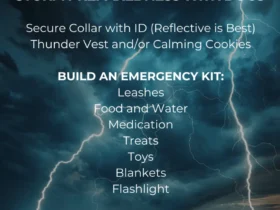
Communication is key in any relationship, and that applies to our furry family members as well. As dog owners, understanding our canine companions’ body language is crucial for fostering a strong bond and ensuring their well-being. Dogs communicate primarily through their body movements and expressions, and learning to decipher these signals can lead to a more harmonious and enjoyable relationship. In this blog, we’ll delve into the fascinating world of canine body language and explore how you can effectively communicate with your dog.
Chapter 1: The Importance of Canine Body Language
Before delving into the specifics of dog body language, it’s essential to grasp why it matters. Dogs are not only our companions but also non-verbal communicators. Their body language reflects their emotions, needs, and intentions. By recognizing and responding to these cues, we can ensure their comfort, reduce stress, and strengthen our bond with them.
Chapter 2: Key Elements of Canine Body Language
Understanding canine body language involves deciphering a variety of signals, including:
- Tail Wagging: Contrary to popular belief, a wagging tail doesn’t always indicate happiness. The speed, height, and direction of the wag can convey different emotions, from excitement to caution.
- Ears: The position and movement of a dog’s ears provide insights into their emotional state. Erect ears often signal alertness, while flattened ears can indicate fear or submission.
- Eyes: A dog’s eyes reveal a lot. Direct eye contact can be seen as a challenge, while averted gaze signifies submission or discomfort.
- Posture: The way a dog stands or moves communicates a great deal. A relaxed stance indicates comfort, while stiff or tense body language can indicate stress or aggression.
- Facial Expressions: Like humans, dogs use facial expressions to convey emotions. Raised lips might signal aggression, while a relaxed mouth indicates a calm state.
Chapter 3: Common Canine Emotions and Reactions
Understanding the emotions dogs experience can help us interpret their body language better:
- Happiness: A wagging tail, relaxed body, and possibly a “play bow” position indicate a joyful dog.
- Fear: Cowering, tucking the tail between the legs, and avoiding eye contact are signs of fear or anxiety.
- Aggression: Raised hackles, growling, and direct staring can indicate aggression or a feeling of threat.
- Submission: Rolling over to expose the belly, averting gaze, and lowering the head are submissive gestures.
Chapter 4: Tailoring Communication for Your Dog
Every dog is unique, and their body language might have subtle variations. Spend time observing your dog’s behavior in various situations to understand their personal cues. As you interact with your furry family member, pay attention to their responses to different gestures, tones, and actions. This will help you build a customized communication style that suits your dog’s personality and preferences.
Chapter 5: Building a Stronger Connection
Effective communication isn’t just about understanding your dog’s body language; it’s also about responding appropriately. By addressing your dog’s needs, acknowledging their emotions, and respecting their boundaries, you’ll strengthen your bond and foster a trusting relationship.
Our dogs have a rich and intricate language of their own, one that doesn’t rely on spoken words. Understanding their body language is an essential skill for any dog owner who wants to create a fulfilling and meaningful relationship with their four-legged family member. By tuning into their non-verbal cues and responding with empathy, we can truly connect with our dogs on a deeper level. So, let’s embark on this journey of understanding and effective communication, and watch our bond with our dogs flourish.







Find Loves Dogs on Social